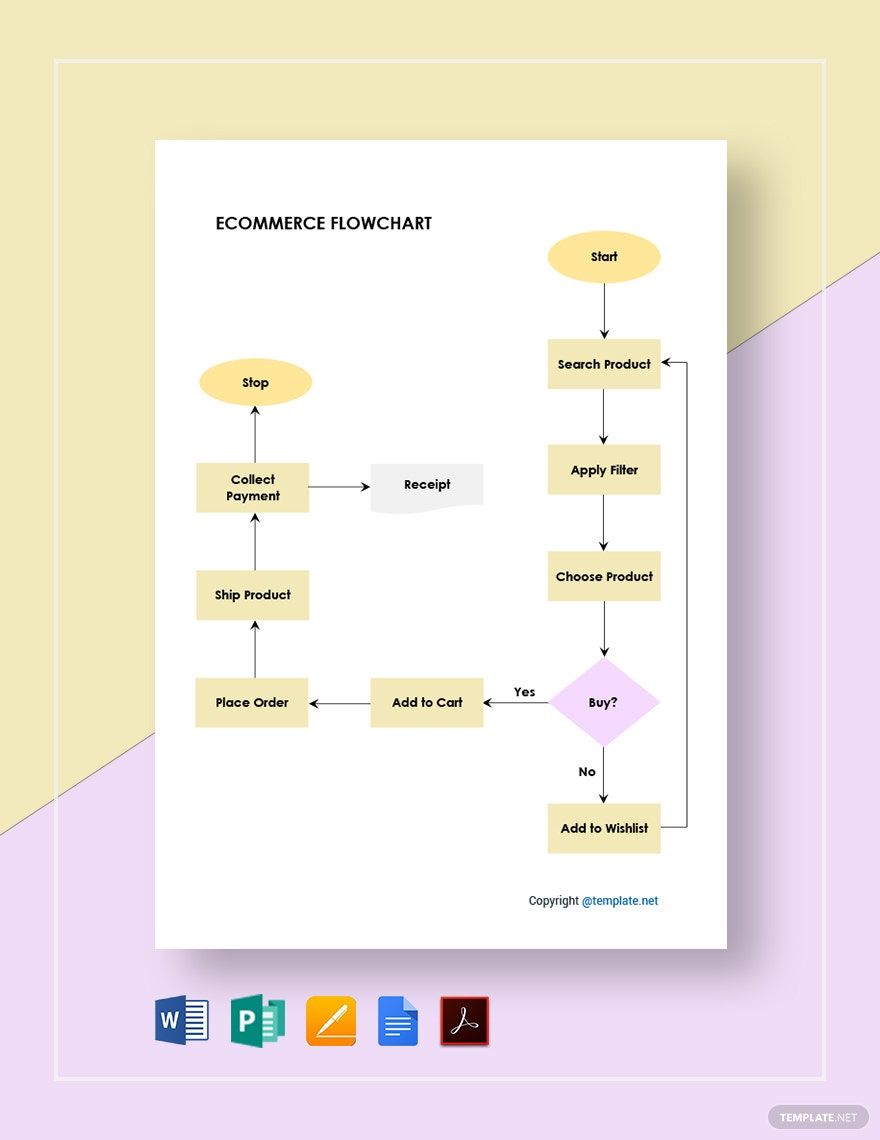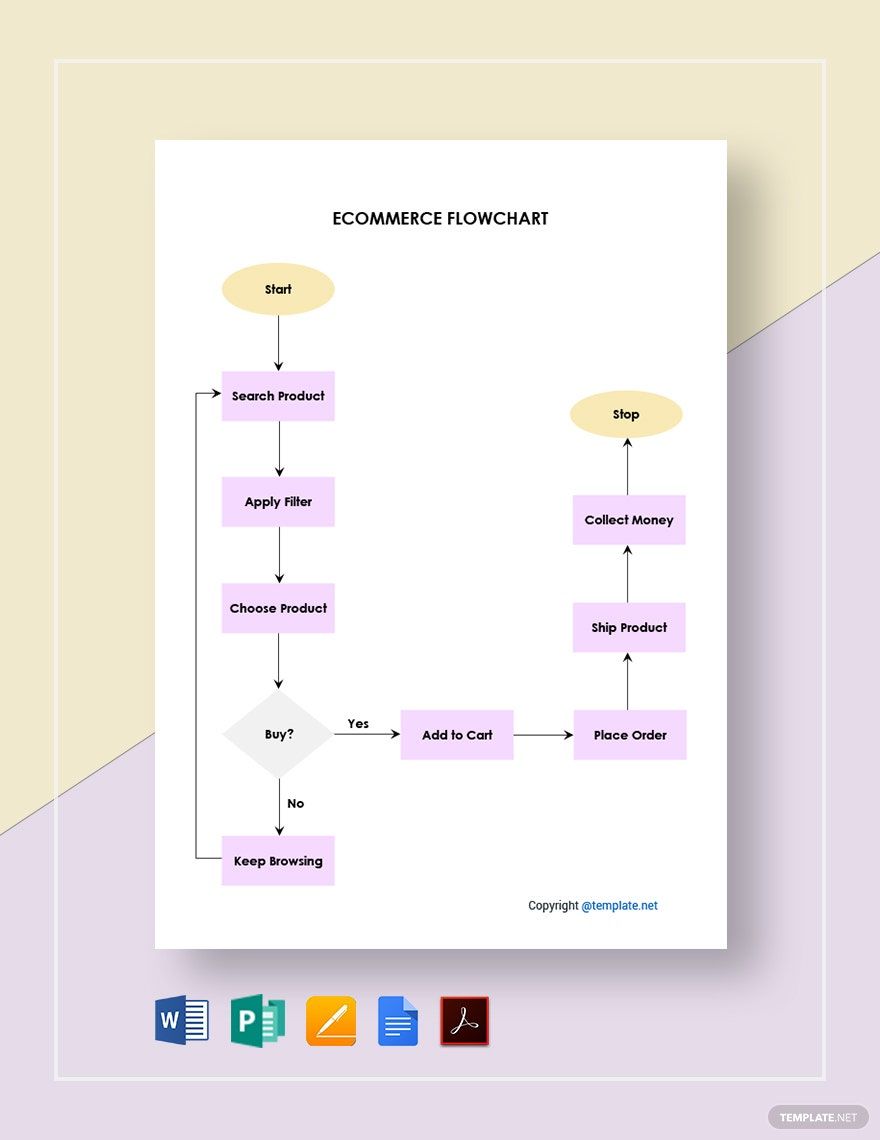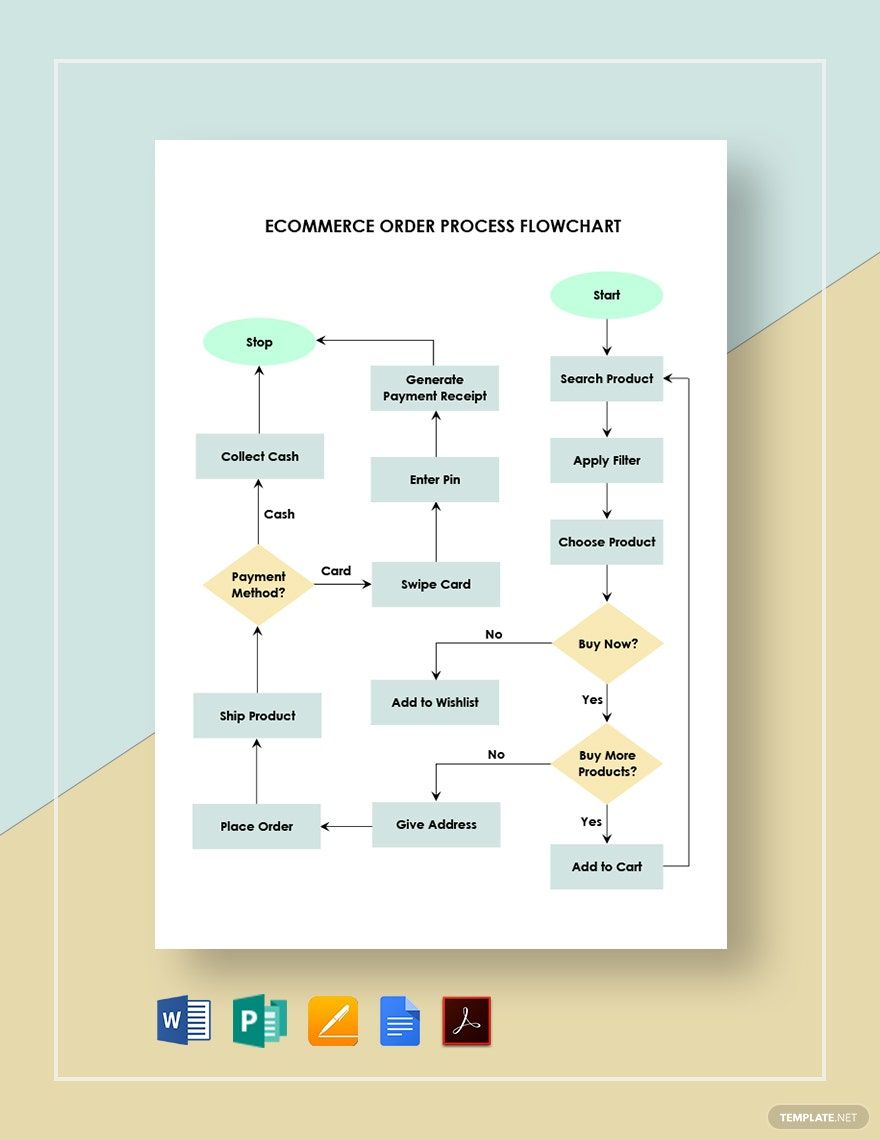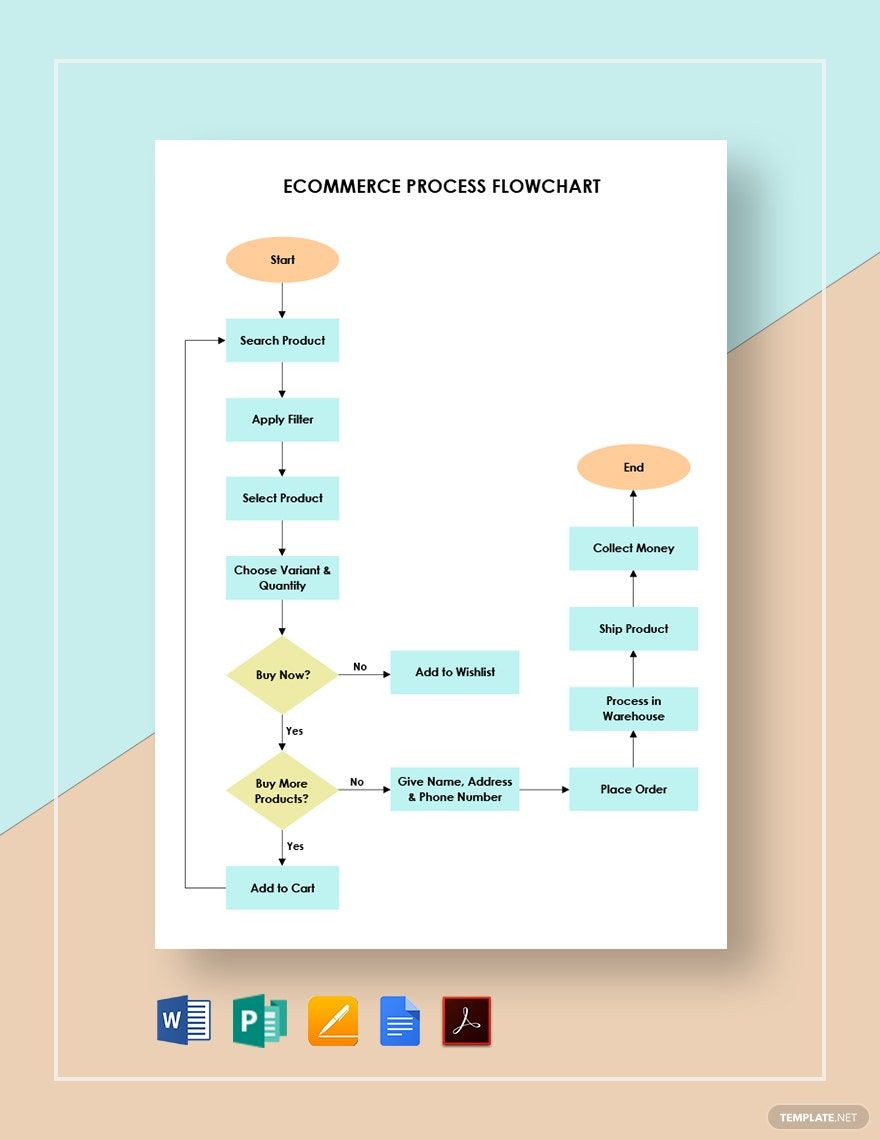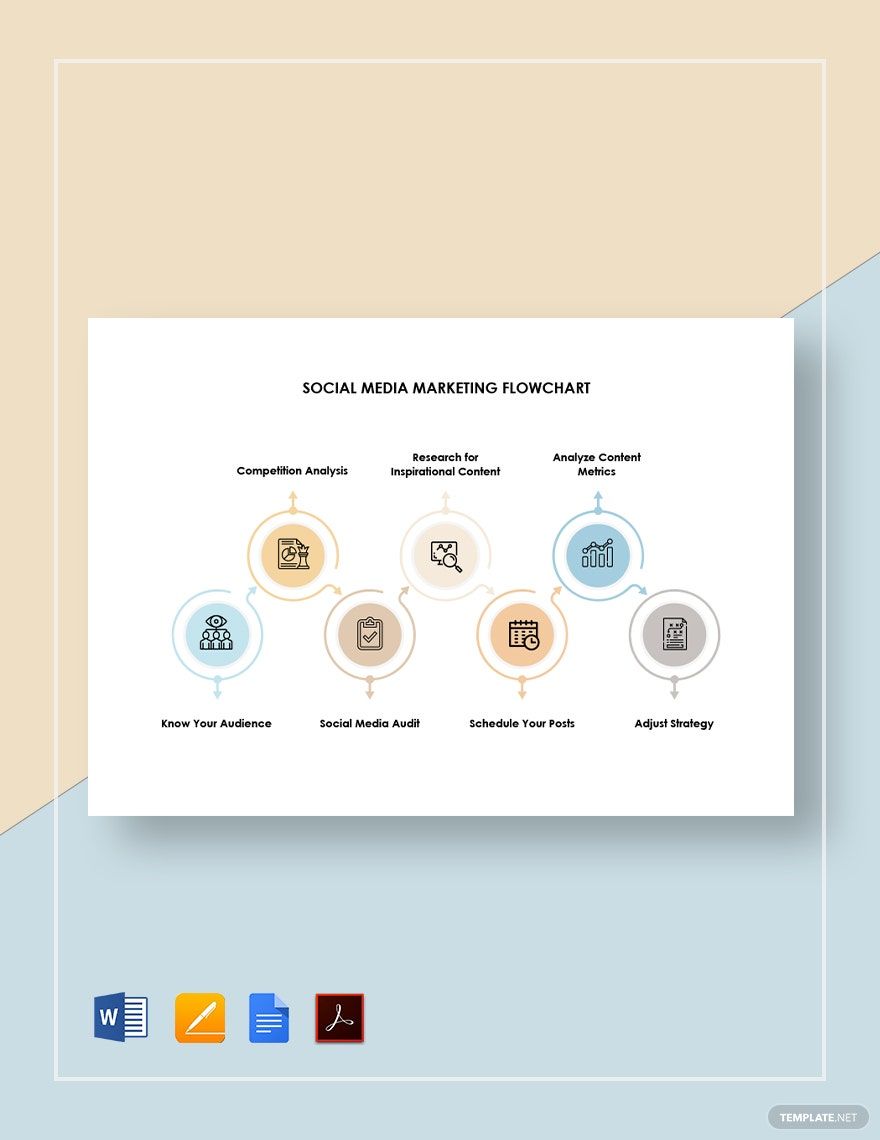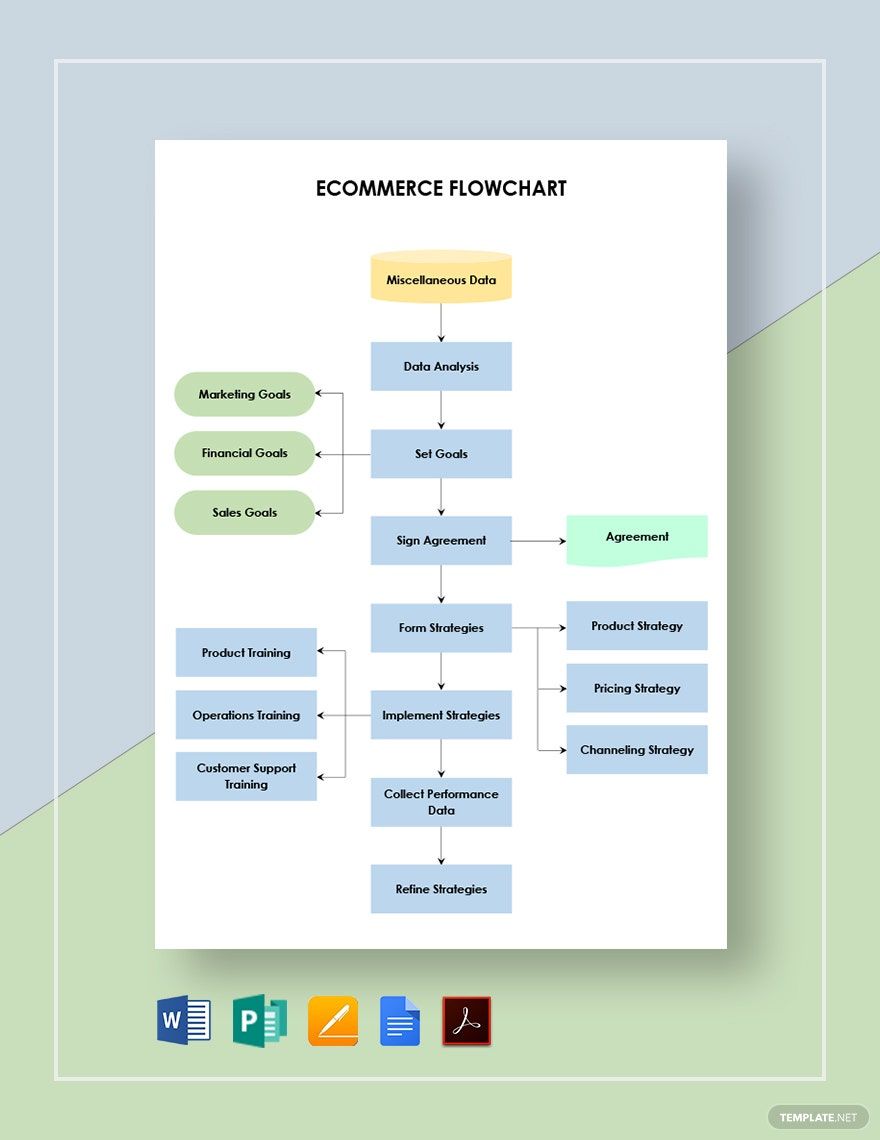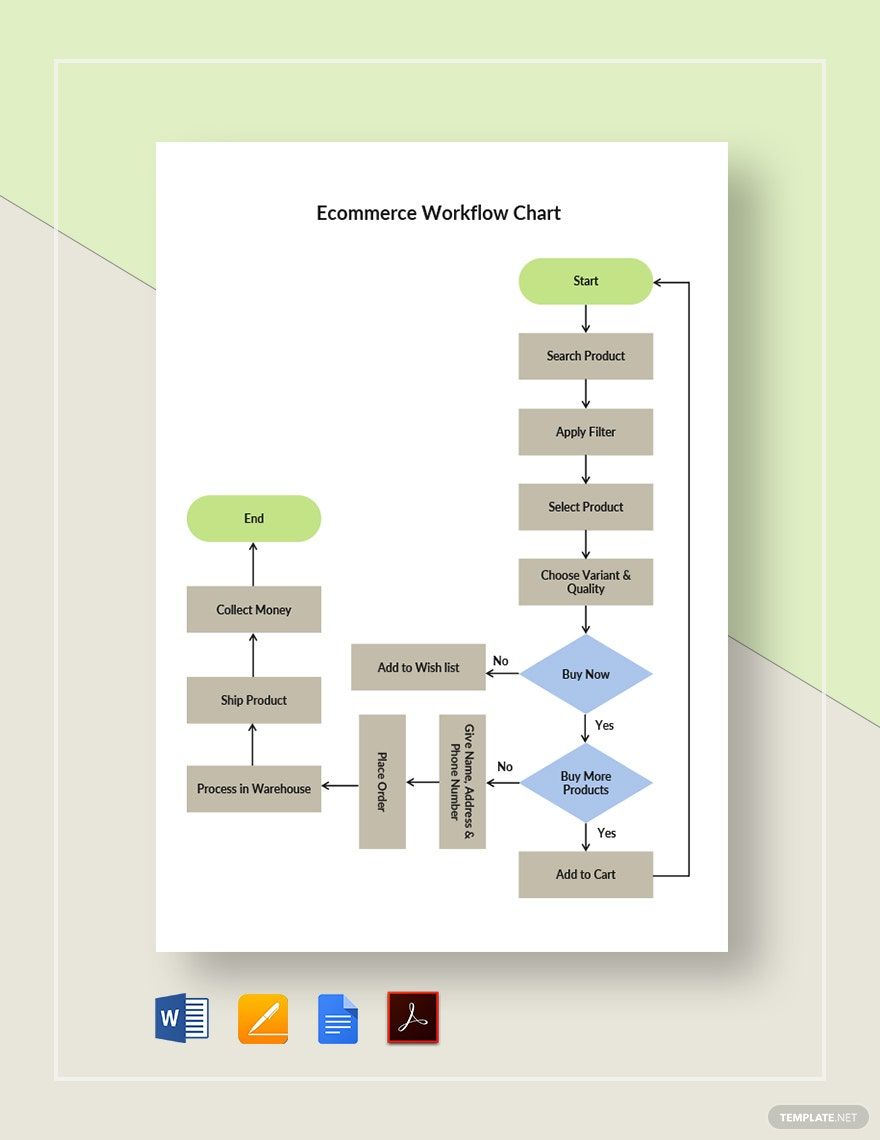People today get the advantage of convenience by shopping online. Clothes, gadgets, food, and groceries, you name it. Everything can be bought through shopping websites. Indeed, the ecommerce business is always at its peak. But even so, online vendors still face several different internal and external challenges. Fixing these problems of delayed orders and customer support would need changes in the workflow. To help you provide support to the needs of your business, explore our Ecommerce Flowchart Templates in PDF. Aside from that, get these templates in A3, A4 or US Letter sizes. Now, you don’t need to worry about building trust with your customers. Download, customize, and print a template now!
How to Create an Ecommerce Flowchart in PDF
Since the time the Internet was made available for commercial use in 1991, there came the existence of “buy and sell”. Then, later on, comes the discovery of selling different products online, which is now what we call an ecommerce business. Based on the survey released by the Pew Research Center, 8 out of 10 Americans consider purchasing their goods online. With websites provided, customers can add products to their shopping carts. But with this appeal in the market, ecommerce businesses often get into several challenges. Problems like the delivery process, checkout, cancellations, returns, and feedbacks highly affect the workflow. Ecommerce business, too, must follow a coherent flow diagram. That is why we provide tips below that you can use to create an Ecommerce Flowchart in PDF.
1. Determine Your Priorities
To get started, figure out what is more important for your business to work. Some businesses need a step by step guide for the customer feedback process. But some are in much need of a coherent flow of the customer purchase. By now, you have to know what your business lacks. Take an hour to reflect further. Or, gather your team around and discuss. This helps you identify your priorities, which will help you create an action plan.
2. Prepare to Visualize the Process
In visualizing the procedure, you’ll need to create a diagram. To do this, you can start from a blank document or use a pre-made template. If making from scratch is time-consuming, you can explore our selections of Ready-Made Ecommerce Flowchart Templates. Ensure to choose which is your preferred layout; horizontal or vertical. Now, download and customize using PDF. Find your pre-made template in your computer’s Download folder. Then, open it with the application.
3. List the Step by Step Process
We suggest you use the vertical flow of the layout. This gives you the flexibility of space to maintain a downward direction of the flow. Even simple charts follow the correct format. And part of that is to fill out all the shapes and boxes with the right task. You always have to make sure the tasks are in proper order. For example, Task A must be followed by Task B, and not the other way around.
4. Maintain Simplicity
Designs are not necessary at all. You need to keep a basic chart that does the job. However, you need to ensure that it still follows correct formatting. Especially in your choice of font style, keep it simple. But whenever in doubt, use Helvetica or Arial. Observe brevity in incorporating the tasks. Keeping each task short is easy to read. Other than that, use at least two consistent colors for each shape’s background. Remember the rule that when the background is lighter, the text style must be dark.
5. Review and Test the Flow
A single mistake could prompt several challenges and risks in the long run. Whether in your website, internal or external controls of your business, following accurate workflow is essential. So, it is necessary to check if the process is right. To do this easily, you can ask your team to do the review extensively. Modify them, if there is a need to. Once everything is done, print enough copies for your organization. And discuss it with your team.
